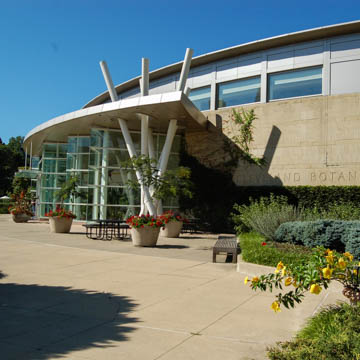Founded in 1930 and occupying a boathouse fronting Wade Lagoon, the Cleveland Botanical Garden was the first civic garden center in the United States. It moved to its current location along East Boulevard in 1966, occupying an unremarkable modern building, limestone-clad with a symmetrical tripartite scheme of central and flanking pavilion. In 2003, Graham Gund Architects renovated and expanded the existing building. They extended the southern pavilion with a visitor center distinguished by its high curving facade and prismatic entry and, most strikingly, grafted what the architects call “an immersion glasshouse” onto the building’s rear flank. The Eleanor Armstrong Smith Glasshouse is an 18,000-square-foot conservatory that utilizes traditional greenhouse construction, rather than a curtain wall, but whose form is based on the geometry of quartz crystal. The result is a faceted and tilted facade that combines the grandeur of Joseph Paxton’s Victorian greenhouses with the dramatic flair of 1980s Deconstructivism.
References
Gund Partnership. “Cleveland Botanical Garden and Conservatory.” Accessed March 20, 2016. http://www.gundpartnership.com/Cleveland-Botanical-Garden-and-Conservatory.

